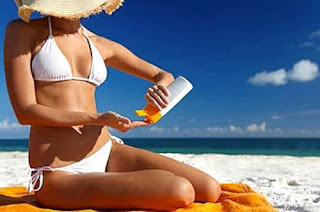Sunlight has a profound effect on the skin causing premature skin ageing, skin cancer, and a host of skin changes. Exposure to ultraviolet light, UVA or UVB, from sunlight accounts for 90% of the symptoms of premature skin ageing. Many skin changes that were commonly believed to be due to ageing, such as easy bruising, are actually a result of prolonged exposure to UV radiation.
The sun gives off ultraviolet radiation that we divide into categories based on the wavelength.
UVC - 100 to 290 nm
UVB - 290 to 320 nm
UVA - 320 to 400 nm
UVA
UVA was once thought to have a minor effect on skin damage, but now studies are showing that UVA is a major contributor to skin damage. UVA penetrates deeper into the skin and works more efficiently. The intensity of UVA radiation is more constant than UVB without the variations during the day and throughout the year. UVA is also not filtered by glass.
There are two parts of the spectrum of light that concern us when we talk about sun protection: Ultraviolet A and Ultraviolet B. Because overexposure to both UVA and UVB can cause sunburn, increase your risk of skin cancer, and lead to premature ageing of the skin, a proper sunscreen must block both types of rays.
Initially, sun block ingredients were developed to block UVB light, only. SPF only measures UVB rays. Since then, the importance of blocking UVA has been recognized, and other chemicals such as benzophenones and Parasol 1789 have been added to sun block formulations. Now, broad spectrum sunscreens, which cover both UVA and UVB, are encouraged, in order to completely minimise the sun's hazards.
These chemical ingredients that work by absorbing light can irritate some people. Subsequently, chemical-free products have become available that contain small particles of transparent zinc oxide, much like the thicker form the lifeguards used to apply. Zinc Oxide works by reflecting UVA and UVB light.
Extreme sun-damage





No comments:
Post a Comment